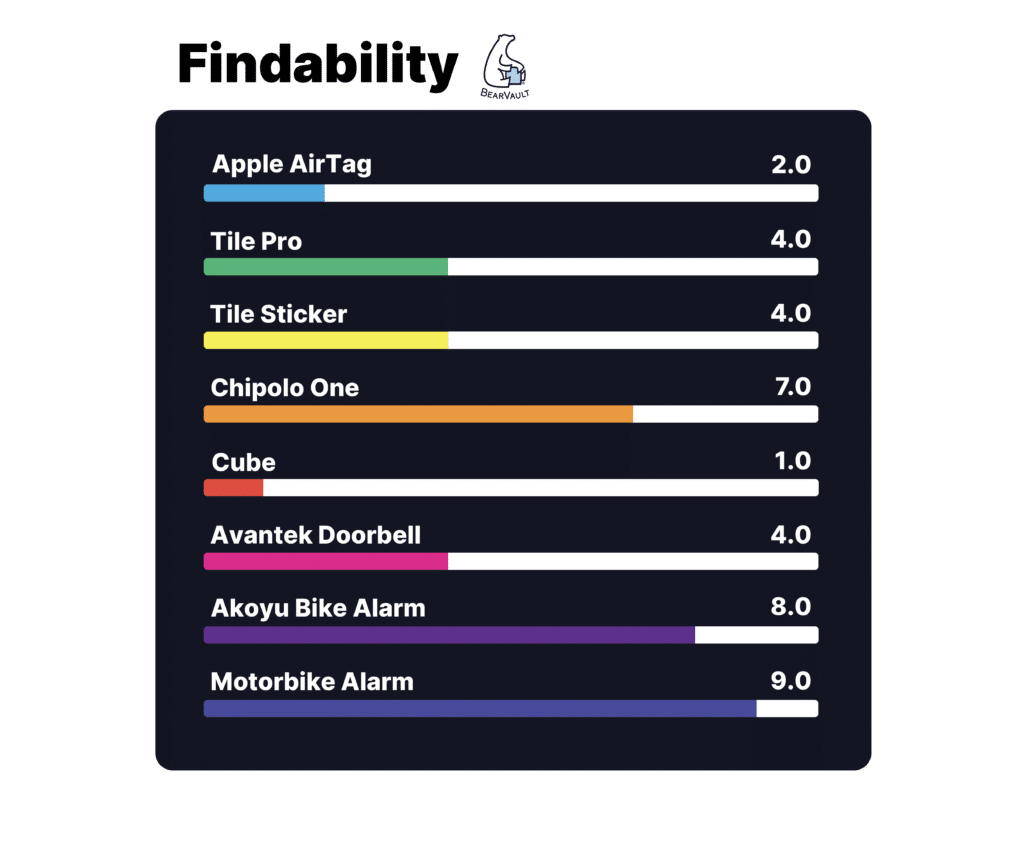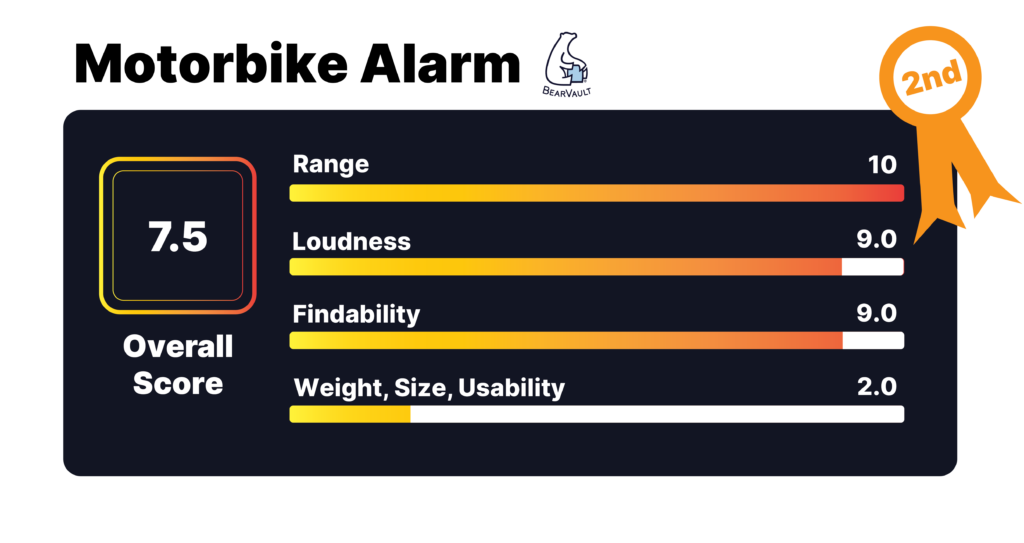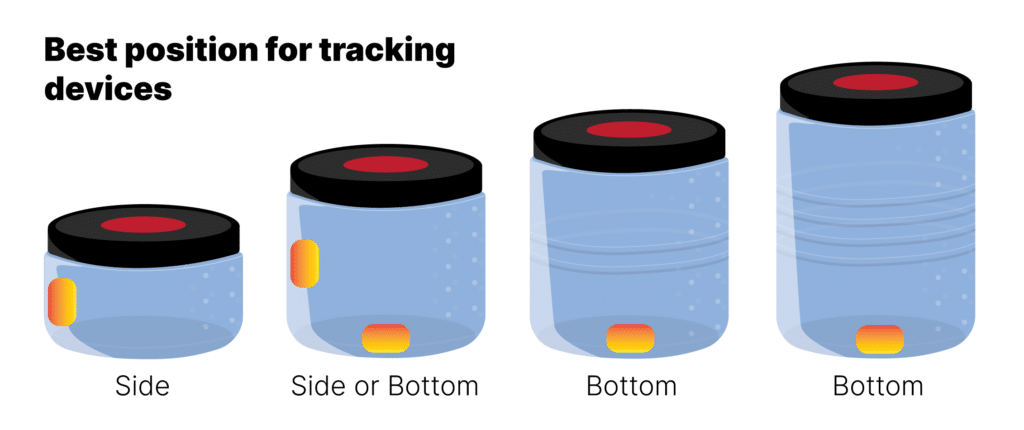Introduction & The Need for Tracking Devices and Alarms
When bears try their best to get after your food in a bear canister things can get wild. It’s a flash of paws, jaws, and claws with the BearVault continually slipping out of the animal’s grasp. The vast majority of interactions between canisters and bears last less than five minutes. Most bears have seen canisters before and know they are not worth their effort. These bears will simply pass by a canister and seek unsecured food from someone else or hopefully look for their natural food sources.
A curious bear will check the canister out, rolling it over and nibbling here and there. They may claw and try a CPR style motion on it. After realizing they are getting nowhere most bears quickly move on. Most times, the canister is within just a few feet of where it was left. However, heavily food conditioned bears and bears stressed about putting on calories during drought years or other food shortages may be more persistent in their attempts to access your human food.

A black bear trying to grasp the slippery sides of the BV425.
Sometimes your canister can get into a bit of a soccer match with the bear. It gets knocked back and forth left and right uphill and downhill. Rarely does the canister go more than a few feet but in heavy vegetation this can make the BearVault difficult to locate. With a few minutes of searching, almost all canisters are quickly located in the morning. What this means is that it is relatively uncommon for your canister to be attacked by a bear and exceptionally uncommon for it to move more than a few feet from where you placed it.
Most people do not need tracking devices. BearVaults have been thwarting bears for over 20 years now and people are consistently able to find their canisters after a bear tries to get in. Before considering a high-tech solution like a tracking tag, try what has worked great for 20 years; choosing a good place to put your canister for the night, and in the unlikely event that it moves – be ready to look for a few minutes to find it.
The lowest of low tech solutions is putting your BearVault in a secure place, such as:
- In a cradle of logs
- Between big boulders
- Deep in a bush
- In a depression or hollow
- Not near a cliff or water



Trust us, you can find a wayward canister
When you plan your trip, it is prudent to consider worst case scenarios and try to find effective ways to reduce the likelihood of these scenarios. One imaginable scenario is losing a canister, and therefore losing your food, which could derail your trip and litter the landscape. However, we cannot stress enough that lost canisters are exceptionally rare. The canisters are designed to be slippery and hard for a bear to move – it works. The bright blue canister is in stark contrast to the environment and is easy to spot. Looking for a wayward canister is not an every morning routine. It is rare that you would ever have to search for it at all. In control tests for the tracking devices, discussed below, we hid the canister in dense riparian vegetation over 100 feet from a searcher. Every time the canister was found in under five minutes. Truly, it is not too hard to find a canister. If you are searching, be persistent and strategic in your approach. Get your group together. Come up with a strategy, divide the area into quarters or halves, walk in concentric circles, or whatever makes sense to you. Keep an eye out for bear scat, bear fur, slobber, or paw prints that could give you a clue. Use common sense such as that the canister is more likely to go downhill than uphill. Do watch for poisonous plants or other hazards while looking. Also, make it fun! You could think of it as a little treasure hunt with coffee and breakfast as the prize. With a bit of persistence, the canister will be found.
Not convinced? If you need a bit more peace of mind, read on for our tracking tag suggestions. For most people, a well placed canister and a willingness to look for a few minutes will be enough. A tracking device is not necessary and you can rest assured that your canister will protect your food from hungry bears. If you are still concerned about finding your canister, usually recreate in areas known for highly food conditioned bears, or travel in ecosystems with steep topography and very thick vegetation, a tracking device may be a great addition to your canister. The rest of this article will provide a head to head comparison of tracking devices.
Tracking Devices
In the past few years there has been a sudden increase in smart tracking devices such as Apple AirTags and Tiles. While primarily designed for tracking down wayward keys, bikes, and wallets, these devices can also be used to track down a missing BearVault after a bear plays with the canister in the night. These small devices communicate with your phone via bluetooth low energy, and, once you are close enough to connect, you can play a small alarm sound when a button is pressed within the app on your phone.
Once this sound is playing you can echolocate your lost item. There are also several more rudimentary radio alarm devices on the market that have a loud alarm activated by the press of a small key fob. These devices are much larger, and don’t work with your phone. However, they do also offer a vibration activated alarm that can be triggered by a curious bear knocking over the canister.
Click on the image below to purchase any of the products in this article
For our test we selected eight devices and ran them head to head through ten tests in the real world to determine what would be the best solution for tracking down your lost canister. These tests centered around scoring the canisters on four key metrics: Loudness, Range, Findability, and Weight/Size/Usability. We conducted the test in as fair of a manner as possible and were surprised by which devices performed the best and where others fell short.
Our test was conducted first at our lab in Louisville, Colorado to compare the decibels that each device can output, measure the device weights, and familiarize ourselves with the features. We then took the test to the mountains above Boulder, Colorado for a field experiment. We tested both in a large open meadow as well as in a densely vegetated riparian area.

Five of the devices are leading smart trackers as of summer 2023. These are the Apple AirTag, Tile Pro, Tile Sticker, Chipolo One, and the Cube. The final three devices were more rudimentary radio devices designed for use as a doorbell, bike alarm, and motorbike alarm.
Comparing Devices head to Head
Loudness:
Each of these devices need to be heard so that you can echolocate the source of the sound and recover the canister. Given the importance of this quality, we tested the loudness on six metrics.
These were:
- Lab tested Decibels outside of canister
- Lab tested Decibels in empty canister
- Lab tested Decibels at the edge of a full canister
- Lab tested Decibels in the center of a full canister
- Furthest Audible distance in an open meadow (Calm winds)
- Furthest Audible distance in a densely vegetated area (Calm winds)
We took the data from these tests and ranked their performance. Generally speaking, the louder the device the easier it is to find and so we scored it better. However, some devices, such as the Cube and Tile, sound a lot like a bird chirping and blend into the natural environment more than other devices.
Among the smart devices, the Chipolo One was consistently loud. This device seemed to be able to transmit sound through the thick canister better than other devices even when put into the center of a full canister of food. The sound from this device cuts through the natural environment with ease and was easy to hear and locate from 15-55 feet further than other smart devices.
The remote alarms are designed to be loud and are easy to hear. When outside of a canister they are almost painfully loud. However, the canister still muffles the sound substantially and you need to get closer. With the exception of the poor wireless doorbell performance, these devices were still much louder than the smart devices and were the fastest to find due to the loud noises.

Range:
Before you can hear the sound of one of these devices you first need to be able to trigger the sound by connecting to the device. With the smart trackers this is done through bluetooth low energy and your mobile phone. The more rudimentary radio alarm devices use a more simple radio frequency and a separate remote similar to a garage door opener. For the smart trackers, the Chipolo One and Cube trackers had substantially further range than the Tile devices and Apple AirTag. This was a 100-140ft range or about twice the range of the Apple and Tile Devices. The smart tracker devices did not see a performance decrease between the open area and the vegetated area.
In the open area the simple radio alarm devices had a far superior range of over 200 feet, well beyond what the person pressing the button can hear. However, once in dense vegetation, this range dropped significantly. Even after the significant drop in range, the range was comparable to the smart devices. This drop in range is not fully understood. The simple devices operate at a lower frequency that should be able to get around thick vegetation easier than the higher frequency Bluetooth low energy devices. However, the more advanced devices offer better signal filtering and are able to deal with the interference better and therefore lose less range.

Findability:
Ultimately, findability is where the rubber meets the road. The canister has to be found in a reasonable amount of time. Unfortunately, this test is also the most subjective. Without a large sample size sometimes the person searching got lucky and other times they were unlucky. In our test, the person searching was blindfolded and wore earplugs while the assistant and timer hid the canister 150-250 feet away in any direction. Then the searcher would use the app or remote to find the canister as quickly as possible.
During a control test, with no device in the canister it took about five minutes to locate the canister using only a visual search. In the highly vegetated environment, sound bounces differently and the devices were actually easier to find than in the open meadow. However, our results varied quite a bit and should be taken with a grain of salt given experiment design constraints. We found that devices that performed well in the open were harder to find in the vegetation and vice versa.
Generally the Tile Sticker and Chipolo One smart devices performed best when they were found in 1-2 minutes. They were however beaten by the very loud alarm systems that allowed the devices to be consistently located in under a minute.

Weight, Size, and Usability:
At this point you may be leaning towards the simple remote alarm systems due to their performance in locating the canister. However, these devices are much heavier and bulkier. They average 10 times the weight and take up quite a bit more space. (110 grams average vs. 11 grams average). The remote alarm systems require a separate remote control that is more likely to be misplaced than your phone and is yet another item to pack. Whether the loud sound and rapid findability are worth the weight is up to you.
The remote alarm systems (other than the doorbell system) do have built-in motion detectors and can trigger the alarm if vibrations are detected. This would be triggered by a bear playing with the canister. Whether this sound would be enough to startle a bear and make it leave the canister alone has not been tested but is very plausible. There is also the concern of forgetting to disarm the system in a haste to find morning coffee or someone innocently mistaking your vault for theirs in a busy area. If the system is not disarmed before retrieving the canister after a peaceful night, waking up the entire campsite with loud alarm sounds is very likely. I can imagine you rapidly trying to find the remote to turn it off while everyone camped near you wakes up wanting you dead.

Some devices such as the Apple AirTag have systems to help you hone your phone to the device. This can be a signal strength bar, or a distance in feet. However, these systems were disoriented by the polycarbonate housing of the canister and were rendered generally useless. This means that you need to locate the canister by sound alone. Or, if the device connects, you know that you are at least within a 100 foot radius of the device.
Of the smart devices, all of their apps worked reasonably well and were not excessively buggy. The core ringing feature worked offline for each app. Though, as discussed below, other features did not work offline. The Apple AirTag integrates the most seamlessly with an Iphone and does not require a separate app that is more prone to issues and bugs. The devices all held battery well and did not seem to put an excessive amount of load on the iPhone battery.
Most of the devices plot your lost item on a map and if another person who has the app is near the device it will update the location on the map. This is helpful if your BearVault has been stolen in downtown Manhattan and is riding around New York City. However, in the backcountry it is highly unlikely that anyone else will be closer to your canister than you are and also have cell service. The maps do not cache offline and are not nearly detailed enough to be of any help whatsoever in locating the canister. Even once you have a connection with the device, the maps cannot tell you if it is to your left, right, infront or behind.

What we learned and our recommendations
If you are going to choose a smart device, we highly recommend the Chipolo One device. The Chipolo One Spot and Point devices (optimized for Apple and Google respectively) offer the same performance. This device was consistently easy to locate and only weighs 7 grams and costs $25.




Despite the excessive weight, we chose to give the “Motorbike Alarm” from Ebay the runner-up position. This device is extraordinarily easy to find. Once it is triggered you can hear it and walk almost directly to the source. Furthermore, it is loud enough that when set in the motion sensing mode it may sufficiently startle a bear so that the canister is left alone. At only $17.57 this device packs a punch. If you choose to use it, please be respectful of other campers nearby and know that it is loud enough to wake up even heavy sleepers.



What we learned and our recommendations
During our lab testing, we saw a substantial amount of sound loss as the device was moved inside a canister and then to the center of a full canister. Generally speaking, ten decibels of sound difference is perceived as twice as loud. On average the devices lost 18.3db when moved into the canister or lost roughly 75% of their “loudness”. When moved to the center of the canister another 8.5db on average was lost or almost 50% quieter than at the edge of the canister.
It is not recommended to attach the device to the exterior of the canister as a bear would easily knock it off. However, ensuring that the device stays up against an exterior wall of the canister can essentially make it twice as loud than if it was mixed with your food in the center of your canister. This can be as simple as a piece of tape fixing it to the bottom of the canister. When a bear finishes playing with a canister, there is no guaranteeing what side will be up.

You could be lucky and have the device near the top where the sound would project the best. Or, it could be directly next to the ground which will further muffle the sound and make it harder to hear. With the BV425-Sprint canister it is most likely to land on its bottom or lid, so the inside curved side may be the best placement. The BV450-Jaunt may wind up in any position so anywhere along the inside edge is your best bet. The BV475-Trek and BV500-Journey are most likely to wind up on their sides, so a placement on the inside bottom of the canister may help the sound project as far as possible.
Lastly, you may want to disable the automatic “lost item” feature on the smart devices so that you are not constantly notified that you left your canister behind when you stash it for the night. It would be unwise to try to rely on this feature for determining if a bear has your canister and is moving it in the night. If you are camping in range of the smart device, your tent is too close to your bear canister.
Concluding Thoughts
With years of experience handling warranty claims for wildlife damage and hearing the stories of people who have had their canisters rolled around by bears we don’t feel the need to recommend that everyone should go purchase a tracking device. Reports of canisters completely lost in the woods are exceptionally rare. By choosing a good spot to store your canister for the night and being willing to look around a bit in the morning, you will almost always find your canister. However, in certain circumstances it may make sense to carry a tracker.





